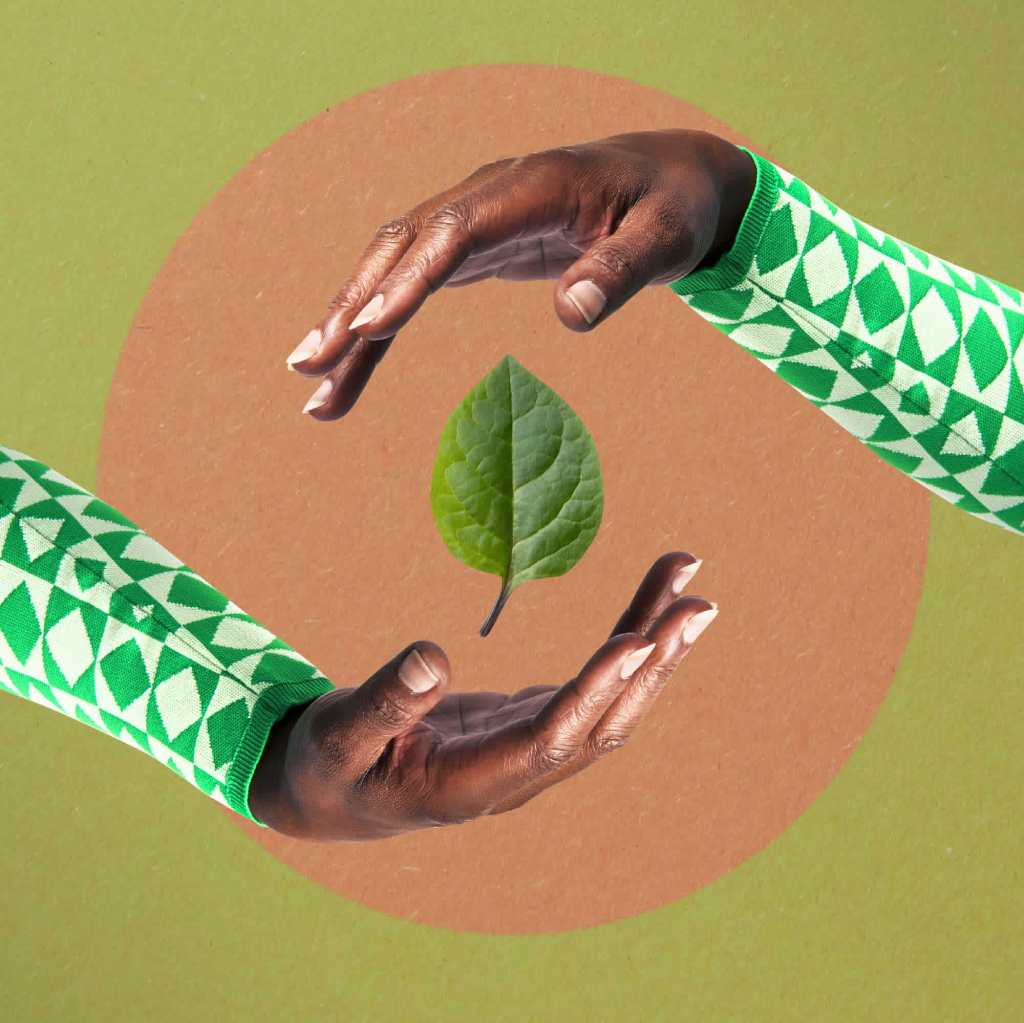Until recently, my knowledge of what actually makes a product environmentally-friendly was pretty limited. I try to select products with sustainably produced packaging when I can and opt for household cleaning products that are all-natural or as close to it as possible. But as far as my beauty cabinet is concerned, I had ignorantly never considered that there’s more to sustainability than recyclable packaging and minimising over-consumption.
So, in the interest of always trying to learn and get better, I started reading. The truth is, there are a few things to consider when figuring out whether a beauty product is environmentally-friendly. To find out what to look out for when sourcing products you can be proud of, we looked to Garnier Green Labs, which is both committed to creating a more sustainable beauty industry and transparent about the ways they’re doing it.
Ahead, we’ll break down a few of the main factors to keep in mind when restocking on your favourites.
Powered by Renewables
If a brand’s supply chain is powered by renewables, you better believe it’ll be displaying it on their website and all across its social media accounts — so if it’s hard to find this information, you probably have your answer on how sustainable the brand is.
There are a few key things that contribute to whether a brand has embraced renewables, like reducing the amount of industrial water consumption along the production line and by reducing their carbon emissions (or, even better, are striving for carbon neutrality).
Is the brand taking full advantage of, or striving to take full advantage of, biomethanisation, solar panels, biomass, wind energy? All good questions to ask yourself if sustainability is a priority for you when deciding how to spend your money. Garnier Green Labs products (including its three great serum creams) are produced in a plant that is powered by 60% renewable energy.
Formulations Matter
You may have considered whether your household cleaning products are pumping chemicals into the waterways, but have you also asked yourself whether your beauty products are doing the same? Until recently, I hadn’t. But the truth is, not all formulations are created equally and some are far better for the environment than others.
You may remember conversations about microbeads launching into the mainstream sustainability conversation a few years ago. Less than five millimetres in diameter and not-dissolvable, microbeads are small, solid, manufactured plastic particles that are added to a surprising number of rinse-off beauty products such as face scrubs, toothpaste, and body wash. Thankfully, they’ve fallen out of popularity in recent years, due to the microplastics they add to our waterways and the threat they pose to our marine life. They’re in the process of being phased out in Australia, but be sure to avoid products with the ingredients polyethylene (PE), polyethylene terephthalate (PET), nylon (PA), polypropylene (PP), and polymethyl methacrylate (PMMA).
Importantly, all Garnier Green Labs serum creams are made without the use of ingredients that are harmful to the environment, such as: parabens, dyes, mineral oils, sulfates, phthalates, formaldehyde, nonylphenol ethoxylates (NPEs), oxybenzone, SLES, retinyl palmitate, hydroquinone, triclosan, triclocarban, BHA, BHT, and are also formulated without animal-derived ingredients (aka, they’re all vegan).
Meanwhile, not all formulations are biodegradable and determining those that are (or are not) can feel complicated, but prioritising brands that are driving the change in this area and transparently display their OECD biodegradability score — which is a reliable indication of chemical safety and biosafety in products — is a good place to start.
The Packaging
One of the simplest things to look out for when selecting a product off the shelves is how sustainable the packaging is. The most obvious marker is whether it’s recyclable, which is the bare minimum for companies trying to be more green. Most plastic and glass bottles will be recyclable (though pumps aren’t), and since aluminium is infinitely recyclable, it’s another good packaging option to select, if given the option.
Companies that opt for bottles made from post-consumer plastics in packaging where plastic is unavoidable also get a big tick from us. Using Garnier Green Labs as an example, all bottles are made from 100 per cent recycled materials (with the exception of the pumps) rather than virgin plastics, and the cardboard packaging is both recyclable and has a sustainably managed forest certification.
Consider the Source
Sustainable sourcing of organic raw materials from traceable known origins has a hugely positive impact, particularly when large companies commit to it. Read up on the brands you love and pay special attention to whether they place importance on preserving biodiversity, taking action against climate change, promoting economic empowerment, ensuring decent and safe working conditions, and guaranteeing equality.
Sustainable farming not only takes things like reducing both water consumption and waste run-off, but it also protects local ecosystems and, crucially, it also takes ethical and fair working conditions for farmers into account.
Progress is the Priority
Supporting brands that are always moving the sustainability finish line is important because the work will probably never be done. Check a brand’s website and pay extra-close attention to their ongoing commitments to sustainability, looking out for targets for future dates as well as the work that’s already being done. Ask yourself whether they’re innovating in the realms of formulations and packing, whether they’re supporting the communities from which they source their ingredients, and whether they’re embracing renewables for a more sustainable future.
To find out more about the ways Garnier Green Labs is working towards a more sustainable future — and to check out their most eco-friendly range yet — head to the Garnier website.

